Vigier Excess Indus
Add this product to
- My former gear
- My current gear
- My wishlist
Where to buy Excess Indus?
Less
There are no classified ads for this product.
Tech. sheet
- Manufacturer: Vigier
- Model: Excess Indus
- Series: Excess
- Category: 4-string bass guitars
- Other names:excessindus
We have no technical specifications for this product
but your help will be much welcomed
»
User reviews
5.0/5(1 reviews)
5
100 %
4
3
2
1
Published on 03/01/09 at 14:04 (This content has been automatically translated from French)
Made in France
Type: Solid body
Number of Strings: 4
Channel: Screwed and reinforced with carbon (90/10)
Wood: Maple dried for at least 3 years
Shape: D
Finish: Textured
Nut width (mm): 42
Width at last fret (mm): 62
Nut thickness (mm): 19.5
Thickness at 12th fret (mm): 23
String spacing at nut (mm): 33
String spacing at bridge (mm): 57
Height at 12th fret, high E (mm): 2
Height at 12th fret, low E (mm): 2.5
Type of nut: Nut + hardened zero fret Teflon
Button
Wood: Rosewood
Radius of the (mm): 300
Type of frets: Medium
Frets: 24
Scale Length (mm): 860
Compass: Points
Body: alder in two parts, dried for several years
Finish: Varnish dries...…
Type: Solid body
Number of Strings: 4
Channel: Screwed and reinforced with carbon (90/10)
Wood: Maple dried for at least 3 years
Shape: D
Finish: Textured
Nut width (mm): 42
Width at last fret (mm): 62
Nut thickness (mm): 19.5
Thickness at 12th fret (mm): 23
String spacing at nut (mm): 33
String spacing at bridge (mm): 57
Height at 12th fret, high E (mm): 2
Height at 12th fret, low E (mm): 2.5
Type of nut: Nut + hardened zero fret Teflon
Button
Wood: Rosewood
Radius of the (mm): 300
Type of frets: Medium
Frets: 24
Scale Length (mm): 860
Compass: Points
Body: alder in two parts, dried for several years
Finish: Varnish dries...…
Read more
Made in France
Type: Solid body
Number of Strings: 4
Channel: Screwed and reinforced with carbon (90/10)
Wood: Maple dried for at least 3 years
Shape: D
Finish: Textured
Nut width (mm): 42
Width at last fret (mm): 62
Nut thickness (mm): 19.5
Thickness at 12th fret (mm): 23
String spacing at nut (mm): 33
String spacing at bridge (mm): 57
Height at 12th fret, high E (mm): 2
Height at 12th fret, low E (mm): 2.5
Type of nut: Nut + hardened zero fret Teflon
Button
Wood: Rosewood
Radius of the (mm): 300
Type of frets: Medium
Frets: 24
Scale Length (mm): 860
Compass: Points
Body: alder in two parts, dried for several years
Finish: Varnish dries for 5 weeks minimum
Brand mechanics: special Schaller
Type of bridge: To change the strings fast
Mark of the bridge: Vigier
Strap: Secured by an insert deep into the wood.
Finish: Black
Trademark microphones: Benedetti
Microphone type: Single coil
Selector: Libra
Electronics: Active
The electronic circuit is equipped with a reduction of snoring.
Controls: Volume, Balance, Bass, Treble
Shielding: Conductive Paint
Weight (kg): 3.8
Comes with bag / case: Case
UTILIZATION
If the neck is nice? It's easy, fast, it runs on its own is ... unique!
-The access to the latest frets is really good.
The ergonomics are perfect, standing or sitting, it is balanced, not especially heavy. Form is the stratabound, ultra-comfortable.
The setting is perfect, the action is ultra low and it does not frieze. The slap pass alone. Fingers, it's happiness, and a pick, too.
The insert of the jack is tilted upward to avoid falling behind (as low Tune)
Already empty, the sound is magnificent, slamming, balanced, powerful ...
SOUNDS
I love all styles and I play in a melodic metal band with prog influences.
The Excess can adapt to all styles, but does better in some anyway. Say it is surly. Playing sweet ... is the sweetness of a V12 Ferrari ready to tear up the tarmac.
You can get a range of sounds incredible because it has good solid bass, mids that stand without being nasal, treble well defined.
It attacks the little villain. It's a modern sound, very banging with a metal side that I love!
The attack is insane, ultra-punchy. This is my first test of choice in a bass. And that's why I dropped the Fender bass, which I found not attack hard enough.
The Excess is perfect for rock, metal, funk, and going towards the neck pickup, one can dare to flirt with soul, even if it is not his chosen field.
I play an Ampeg Pro + SVT3 Markbass 121H, sometimes through a Big Muff Bass. I also plugged into my DI audio interface, and the sound is always excellent. However, recording the best record will be made with a microphone in front of the baffle.
In repeats, it is an Ampeg SVT-350h with a 4x10 and a bowl of 15 "and it would take off the wallpaper if it were.
It has its distinct character, and sturdy! A small side Fenderien in acute, and a bad side Gibson bass. While the more accurate. Fender is a bit creamy in the treble, a Thunderbird and a tad more serious in the slobbering.
Some compare it to Rick. I found nothing of Rick and all the better (I do not like Rick's).
Prédiletion styles of Excess: metal, heavy rock although nervous, progressive, funk.
In contrast to the dub, soul or reggae, I prefer to use my Thunderbird, which is known to be less nervous.
As a group, it goes like butter in the mix, and is sitting there in the grave. It supports well the bass drum without interference and is not eaten by other drums (And yet I play with a slugger, but not nag -); it associates very well with other instruments (guitar, keyboards, vocals ) without any conflicts.
These same qualities I found in the Gibson Thunderbird, except that the benefit reduces Tunderbird treble. Vigier allows the more acrobatic.
However, the Thunderbird provides decidedly oldschool side.
The quality of the fault: The slightest nuances of play emerge with extraordinary fidelity.
Failure of this quality: it does not forgive the game at the slightest mistake or hesitation means very distinctness.
That said, this is not so low that is in default ...
OVERALL OPINION
I use it for 6 months.
I like everything about this bass, and I do not hate anything.
I tried, owned and played quite a few models before.
A Japanese Jazz Bass Active: Completely on the streets in the edgy style, she did eat in the mix. Perfect for jazz, pop rock, soul.
The Precision: I hate the stick and the sound does not vibrate made me (perhaps too course).
A Rick 4001: A dream for others, not for me.
A MusicMan Sabre: this is good, big beast of funk!
Tune 2: Not bad, not bad ...
From Ibanez: it defended well these critters there, but hey, it lacks a bit of personality.
A Gibson Thunderbird IV is the only one that he stands up and sits beside her.
A James Trussart Steelcaster: it plays in the same course as the Excess and thunderbird.
Here is the "perfectissimo!
The price / quality ratio is really good considering the exceptional quality of the bass, although it remains expensive. The acquisition of such a low investment is long term.
With experience, that's the choice I would do. Besides, this is the first time I noted in an opinion across 10/10.
Type: Solid body
Number of Strings: 4
Channel: Screwed and reinforced with carbon (90/10)
Wood: Maple dried for at least 3 years
Shape: D
Finish: Textured
Nut width (mm): 42
Width at last fret (mm): 62
Nut thickness (mm): 19.5
Thickness at 12th fret (mm): 23
String spacing at nut (mm): 33
String spacing at bridge (mm): 57
Height at 12th fret, high E (mm): 2
Height at 12th fret, low E (mm): 2.5
Type of nut: Nut + hardened zero fret Teflon
Button
Wood: Rosewood
Radius of the (mm): 300
Type of frets: Medium
Frets: 24
Scale Length (mm): 860
Compass: Points
Body: alder in two parts, dried for several years
Finish: Varnish dries for 5 weeks minimum
Brand mechanics: special Schaller
Type of bridge: To change the strings fast
Mark of the bridge: Vigier
Strap: Secured by an insert deep into the wood.
Finish: Black
Trademark microphones: Benedetti
Microphone type: Single coil
Selector: Libra
Electronics: Active
The electronic circuit is equipped with a reduction of snoring.
Controls: Volume, Balance, Bass, Treble
Shielding: Conductive Paint
Weight (kg): 3.8
Comes with bag / case: Case
UTILIZATION
If the neck is nice? It's easy, fast, it runs on its own is ... unique!
-The access to the latest frets is really good.
The ergonomics are perfect, standing or sitting, it is balanced, not especially heavy. Form is the stratabound, ultra-comfortable.
The setting is perfect, the action is ultra low and it does not frieze. The slap pass alone. Fingers, it's happiness, and a pick, too.
The insert of the jack is tilted upward to avoid falling behind (as low Tune)
Already empty, the sound is magnificent, slamming, balanced, powerful ...
SOUNDS
I love all styles and I play in a melodic metal band with prog influences.
The Excess can adapt to all styles, but does better in some anyway. Say it is surly. Playing sweet ... is the sweetness of a V12 Ferrari ready to tear up the tarmac.
You can get a range of sounds incredible because it has good solid bass, mids that stand without being nasal, treble well defined.
It attacks the little villain. It's a modern sound, very banging with a metal side that I love!
The attack is insane, ultra-punchy. This is my first test of choice in a bass. And that's why I dropped the Fender bass, which I found not attack hard enough.
The Excess is perfect for rock, metal, funk, and going towards the neck pickup, one can dare to flirt with soul, even if it is not his chosen field.
I play an Ampeg Pro + SVT3 Markbass 121H, sometimes through a Big Muff Bass. I also plugged into my DI audio interface, and the sound is always excellent. However, recording the best record will be made with a microphone in front of the baffle.
In repeats, it is an Ampeg SVT-350h with a 4x10 and a bowl of 15 "and it would take off the wallpaper if it were.
It has its distinct character, and sturdy! A small side Fenderien in acute, and a bad side Gibson bass. While the more accurate. Fender is a bit creamy in the treble, a Thunderbird and a tad more serious in the slobbering.
Some compare it to Rick. I found nothing of Rick and all the better (I do not like Rick's).
Prédiletion styles of Excess: metal, heavy rock although nervous, progressive, funk.
In contrast to the dub, soul or reggae, I prefer to use my Thunderbird, which is known to be less nervous.
As a group, it goes like butter in the mix, and is sitting there in the grave. It supports well the bass drum without interference and is not eaten by other drums (And yet I play with a slugger, but not nag -); it associates very well with other instruments (guitar, keyboards, vocals ) without any conflicts.
These same qualities I found in the Gibson Thunderbird, except that the benefit reduces Tunderbird treble. Vigier allows the more acrobatic.
However, the Thunderbird provides decidedly oldschool side.
The quality of the fault: The slightest nuances of play emerge with extraordinary fidelity.
Failure of this quality: it does not forgive the game at the slightest mistake or hesitation means very distinctness.
That said, this is not so low that is in default ...
OVERALL OPINION
I use it for 6 months.
I like everything about this bass, and I do not hate anything.
I tried, owned and played quite a few models before.
A Japanese Jazz Bass Active: Completely on the streets in the edgy style, she did eat in the mix. Perfect for jazz, pop rock, soul.
The Precision: I hate the stick and the sound does not vibrate made me (perhaps too course).
A Rick 4001: A dream for others, not for me.
A MusicMan Sabre: this is good, big beast of funk!
Tune 2: Not bad, not bad ...
From Ibanez: it defended well these critters there, but hey, it lacks a bit of personality.
A Gibson Thunderbird IV is the only one that he stands up and sits beside her.
A James Trussart Steelcaster: it plays in the same course as the Excess and thunderbird.
Here is the "perfectissimo!
The price / quality ratio is really good considering the exceptional quality of the bass, although it remains expensive. The acquisition of such a low investment is long term.
With experience, that's the choice I would do. Besides, this is the first time I noted in an opinion across 10/10.
See less
10
»
Other Vigier 4-string bass guitars
-

Excess Roger Glover Signature
4-string bass guitar
-
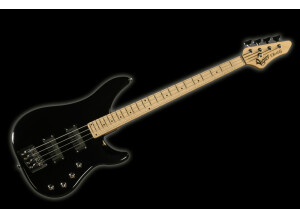
Excess Original
4-string bass guitar
-

Excess Roger Glover Original
4-string bass guitar
-
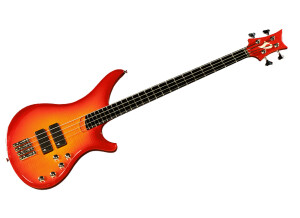
Passion IV
4-string bass guitar
-
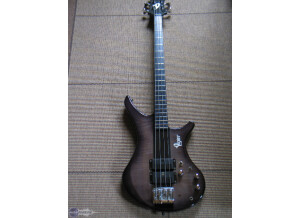
Passion Carbon
4-string bass guitar
-
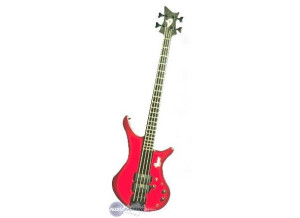
Passion
4-string bass guitar
-
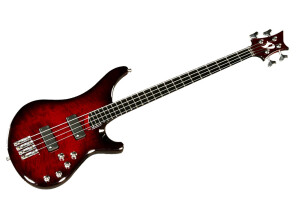
Arpege IV
4-string bass guitar
-
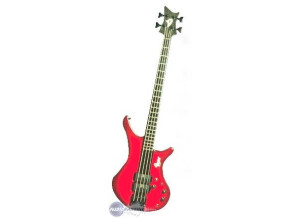
Passion III
4-string bass guitar
-
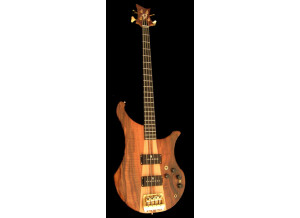
Arpege Vintage Tout Bois
4-string bass guitar
-
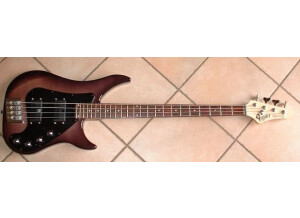
Excess I
4-string bass guitar
Other categories in Electric Basses
Where to buy Excess Indus?
Less
There are no classified ads for this product.









